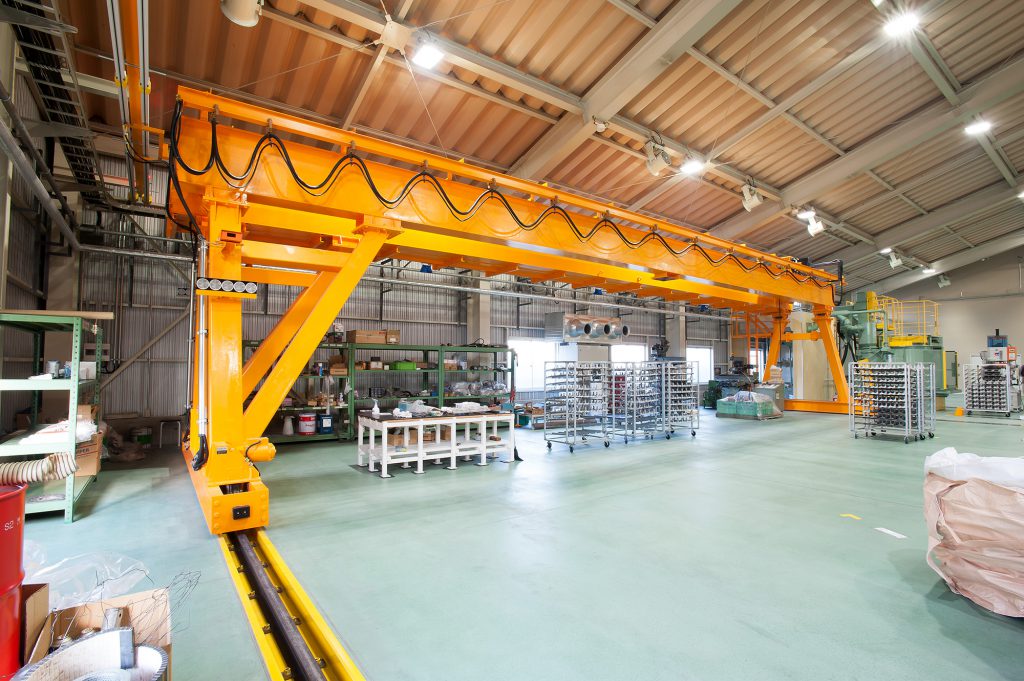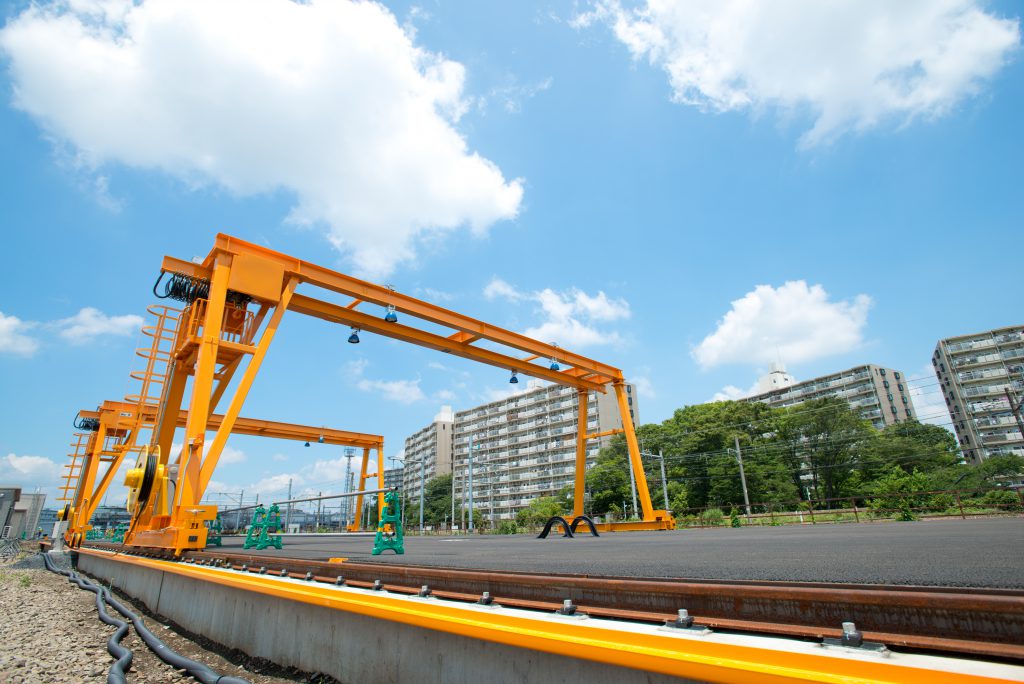Dec. 02.2019
A Crane on a Rail!?
Cranes come in different shapes and structures for different purposes. For this issue we asked Kyohei Yoneyama of the System Designing Group to tell us about the gantry crane.

Many different types of cranes are at work, including overhead cranes, which we often see in production plants, gantry cranes, jib cranes and system cranes, all incorporating different application technologies. Here’s a quick introduction to the gantry crane.

The main feature of the gantry crane is its mechanism, in which a gate-shaped structure runs on rails laid on the ground. It has two legs, a heavier “rigid” leg (left in the photo) and a thinner “swing” leg (right).

Where joints are usually rigid, a notable design point here is a pinned connection between the swing leg and girder. This allows for some rotation flexibility, releasing excess force that could bend the girder or overburden the rail, while reducing wear on the rails and crane wheels.

Often installed outdoors, gantry cranes are built to resist rain and wind. When a pair work together side-by-side, ultrasonic sensors control a safety device that stops the cranes if they come too close together. We design each crane uniquely, with the specific work environment and safety needs in mind.


